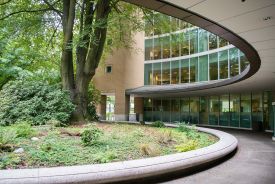NASA's Voyager 1 Probe May Actually Still Be in the Solar System, New Study Suggests Alternate Testing Needed
ByNASA's Voyager 1 probe has spent a lot of time in space and has reportedly entered interstellar space several times, and the most recent report may be another false alarm.
According to an announcement from NASA's Jet Propulsion Laboratory (JPL), Voyager 1 mission managers are not sure on whether or not the probe has left the solar system. The JPL said a recent study published in the Geophysical Research Letters suggested an alternate test should be used to verify the Voyager 1's position.
Earlier this month, NASA announced in a news release that the Voyager 1 had left the heliosphere, a "bubble" covering the sun and all its planets. The report cited a "tsunami wave" that apparently indicated the probe had entered interstellar space in the fall of 2013.
Now, NASA is not quite as sure of the whereabouts of the probe it launched in 1977 initially to observe Jupiter.
"It is the nature of the scientific process that alternative theories are developed in order to account for new observations," Ed Stone, the mission's project scientist since 1972, said in the JPL's statement. "This paper differs from other models of the solar wind and the heliosphere and is among the new models that the Voyager team will be studying as more data are acquired by Voyager."
Being so far away from where the probe was built more than 30 years ago, it can take a good deal of time for any signal from the probe to reach Earth. For example, mission managers thought the Voyager 1 had left the heliosphere in 2003, but later learned in 2010 it was actually just in preparation, according to TIME.
NASA went through the same thing in 2012, only to learn their deep-space probe was technically still in the solar system a year later. Stone and his team will be keeping as close a watch on the Voyager 1 as they can from so far away, but it could be another year before they have an answer.
© 2025 University Herald, All rights reserved. Do not reproduce without permission.








